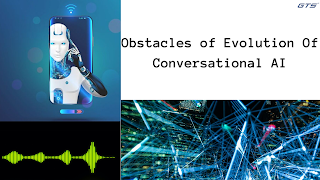Obstacles Of Evolutions Of Conversational AI
2020 saw a boom in interest in conversational AI and corporate investment into machine learning platforms. This was in large part due the COVID-19 pandemic that forced nearly all industries to find better ways to do less. Banks, retailers, and airlines saw the need to automate customer service and realized the limitations of human customer-support staff. The pandemic has changed consumer expectations, increasing the demand to provide digital-first customer experiences.
Machine learning and artificial intelligence have made it possible for computers to perform more cognitive tasks. Companies can now rely upon machines for crucial functions that were once impossible to automate. The rise of conversational AI platforms, such as chatbots or virtual cognitive agents, has allowed organizations from many industries to improve their customer support and HR activities.
Where are we now?
A Salesforce survey that was conducted before the pandemic showed that 62% were open for businesses to incorporate AI into customer interactions. As AI platforms have improved, this percentage likely has increased. However, there are some hurdles that need to be overcome in order for conversational artificial intelligence to become a ubiquitous tool for customer engagement.
1. Detecting emotions
Most platforms are still not well-versed in detecting emotions. Emotions are as important in human communication as language. Any change in tone could drastically alter the meaning of written or spoken dialogue. Product teams need to have a lot of AI Training Datasets, with many different voices, in order to train computers to spot subtle contextual cues. Finding all of that data can be a difficult task.
2. Finding the right voice
Another challenge for AI is to distinguish between a single speaker and a number of voices. Anyone with an in-home smart speakers such as Amazon's Alexa, Google Home or Amazon's Alexa will be familiar with this problem. These platforms could respond to unintentional commands or fail to distinguish between multiple conversations in a noisy living room. While this may provide some comedy relief and minor frustration, it is important that AI doesn't confuse user accounts when conducting business transactions that involve sensitive customer information via voice commands.
3. Learn new languages
Many people don't know English. Conversational AI platforms are required for global organizations that want to communicate with customers abroad using conversational AI. They must be able to understand not just different languages, but also cultural differences and regional dialects. This would require large amounts and a wide variety of audio and Speech Recognition Dataset from many communities. That data would need to cover many topics.
Despite these limitations, conversational artificial intelligence holds tremendous potential for all businesses. GTS can help unlock that potential. All it takes is data. Our company can provide product teams with audio data that has been annotated and transcribed in over 50 languages. We have developed a data acquisition app that allows for the efficient distribution of data collection tasks to international teams of data collectors. The app interface allows data service providers and data collection companies to view their assigned tasks, review detailed project guidelines, and quickly submit and/or upload data for approval by project auditors.
This app, when used with the GTS is only one of many tools that allow us to source and transcribe data at any scale required to train sophisticated algorithms to be used in real-world customer interactions. Find out more about our conversational AI leadership. Get in touch and let's make conversation about AI.

Comments
Post a Comment